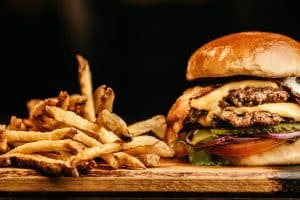GLP-1 Meds Are Changing Consumer Habits

A paradigm shift is underway in the world of food and beverage consumption, and it’s being driven by a surprising catalyst: medications. Specifically, GLP-1 drugs, primarily used for weight loss and managing diabetes, are not only altering consumer behavior but also posing challenges to various sectors of the food industry.
Recent survey points to significant impact
A recent survey conducted by Morgan Stanley sheds light on the significant impact of GLP-1 medications on consumer spending habits, particularly in the realm of dining out and getting takeout. According to the survey, a majority of people taking GLP-1 drugs reported spending less on restaurant meals and deliveries, indicating a notable shift in their culinary preferences. In contrast, a smaller proportion indicated tightening their budgets while grocery shopping, suggesting a more nuanced effect on at-home food consumption.
Morgan Stanley analysts put it this way:
There is growing evidence that the drugs have a meaningful impact on consumer behavior and spending on groceries and restaurants… All of these dynamics suggest GLP-1 drugs’ impact across consumer sectors is set to increase as drug uptake grows and the drugs reshape behavior among a demographic group that represents a disproportionate share of calorie consumption.
Raised concerns as a consequence
The implications of this behavioral shift are reverberating across the food and beverage industry, raising concerns among stakeholders about potential revenue implications. With the market for GLP-1 drugs projected to reach a staggering $105 billion by 2030 and an estimated 31.5 million Americans expected to be on these medications by 2035, the impact on various sectors of the food industry is not to be underestimated.
However, according to CNBC, which was one of the many outlets reporting on the survey results,
[M]any food and beverage companies have reassured investors over the last few months that it’s still unclear how much those drugs will lower their revenue. Morgan Stanley also said in the survey that GLP-1s are a manageable long-term pressure on restaurants, not an “existential risk.”
Food companies survival projections
Among the most vulnerable are traditional fast-food chains and packaged food manufacturers, whose offerings often align with the high-calorie, indulgent preferences that GLP-1 medications seem to deter. Conversely, places offering healthier alternatives, such as fast-casual restaurants focusing on fresh ingredients and nutritional transparency, are better positioned to weather the storm of changing consumer habits.
In particular, brands like Cava, Chipotle, Sweetgreen, and Starbucks stand out as adaptable to the evolving consumer landscape, while legacy fast-food chains like Jack in the Box, Wendy’s, and Shake Shack may face greater pressure to innovate and cater to health-conscious clientele.
Similarly, packaged food companies like Hershey are identified as particularly vulnerable due to their reliance on traditional, calorie-dense snacks. On the flip side, companies offering healthier alternatives, such as Vital Farms and Simply Good Foods, are poised to benefit from the growing demand for nutritious options.
What foods might be out?
The survey also highlights the impact of GLP-1 medications on specific food categories, with consumers reporting reduced consumption of snacks, confections, and sugary drinks. This trend is expected to translate into a decline in the consumption of certain products, including ice cream, cakes, candies, and regular sodas, by 2035.
GLP-1 drugs are going for your vices, too
Wait, there’s more. It’s not just the food but tobacco and alcohol, too. The report suggests that users of GLP-1 drugs, including Ozempic, are reducing their consumption of tobacco and alcohol while on these medications due to appetite suppression effects. Survey data shows significant reductions in both tobacco and alcohol consumption after starting the treatment.
While caution is advised in drawing conclusions, anecdotal evidence suggests these drugs might help curb addictive behaviors. Clinical trials are underway to explore this further. Morgan Stanley predicts continued growth in the GLP-1 market, projecting a $105 billion global market by 2030, with around 31.5 million users in the U.S. by 2035.
The bottom line
The rise of GLP-1 medications is reshaping consumer habits and posing challenges to various sectors of the food and beverage industry. While some companies may face headwinds, others have the opportunity to innovate and cater to the growing demand for healthier options. As the landscape continues to evolve, adaptation and responsiveness to changing consumer preferences will be key for businesses seeking to thrive in this new era of food consumption.
Your responses and feedback are welcome!
Source: “Most people on weight loss drugs are spending less on restaurants and takeout, survey says,” CNBC, 4/20/24
Source: “Ozempic is coming for the alcohol and tobacco industries next,” Quartz, 4/23/24
Image by Jonathan Borba on Unsplash








